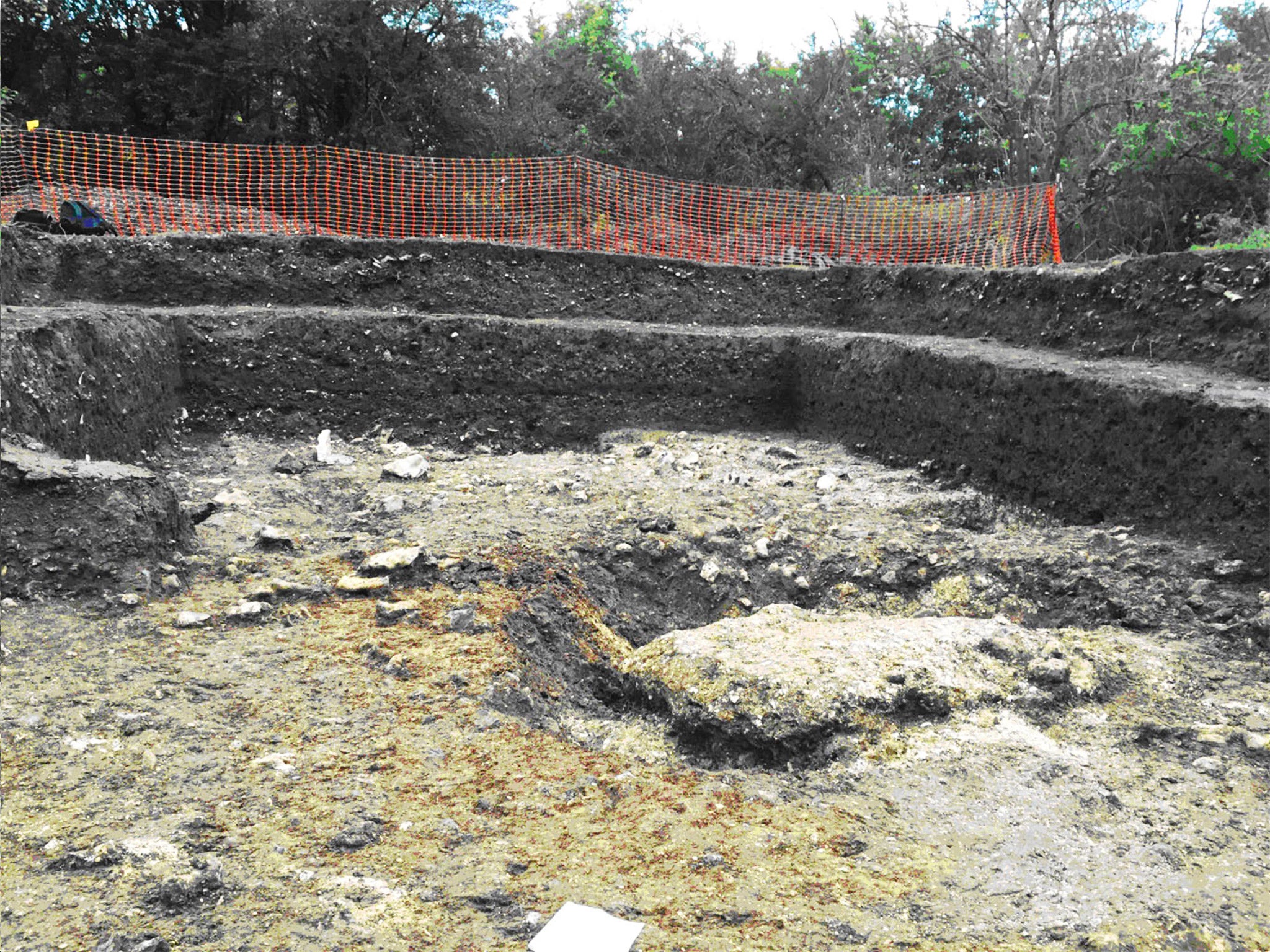Prehistoric 'eco-house' 1,300 years older than Stonehenge discovered by archaeologists
Academics fear that the 6,300-year-old settlement could be severely damaged by a new road tunnel

Your support helps us to tell the story
From reproductive rights to climate change to Big Tech, The Independent is on the ground when the story is developing. Whether it's investigating the financials of Elon Musk's pro-Trump PAC or producing our latest documentary, 'The A Word', which shines a light on the American women fighting for reproductive rights, we know how important it is to parse out the facts from the messaging.
At such a critical moment in US history, we need reporters on the ground. Your donation allows us to keep sending journalists to speak to both sides of the story.
The Independent is trusted by Americans across the entire political spectrum. And unlike many other quality news outlets, we choose not to lock Americans out of our reporting and analysis with paywalls. We believe quality journalism should be available to everyone, paid for by those who can afford it.
Your support makes all the difference.Archaeologists have discovered the oldest prehistoric building ever found in the Stonehenge landscape – but fear a new road tunnel could severely damage the site.
Dating from around 6,300 years ago – at least 1,300 years before Stonehenge – it was built immediately adjacent to a sacred Stone Age spring.
Academics have dubbed it an “eco” house because the base of a fallen tree was used as one of the walls.
The building is important as it appears to have been constructed by indigenous Mesolithic hunter-gatherers at the time when the very first semi-agricultural European-originating Neolithic settlers were arriving in the area.
The tools found in the building are Mesolithic (ie, pre-Neolithic) – but the period they date from is the dawn of the early Neolithic. Archaeological discoveries are revealing that, within just a few generations, the population at the site had adopted Neolithic tool-making traditions – or alternatively had been physically displaced by Neolithic settlers.
The potentially semi-permanent nature of the newly discovered house is suggested by the deep post-holes used to construct it and by a large cobbled area (covering at least 90 square metres – and including a pathway), immediately adjacent to it.

The cobbled path led down to a spring which Mesolithic people used as a place for making ritual offerings.
So far, archaeologists at the site, just over a mile east of Stonehenge, have found tens of thousands of objects placed by these Stone Age people in the spring – including more than 20,000 flint tools, a large sandstone animal skin smoother, a slate arrow head from Cornwall or Wales, pieces of burnt flint and more than 2,400 animal bones .
Archaeologists are now worried that the Government’s plan to improve the Stonehenge landscape by putting the A303 in a cutting and tunnel, will change the local water level and thus destroy or severely damage the spring and any important and potentially unique water-logged archaeological remains.
“I am very concerned that any reduction in the groundwater level at the spring site and elsewhere in the Avon valley might potentially be a threat to archaeologically important waterlogged organic artefacts and ancient environmental evidence,” said University of Buckingham archaeologist David Jacques, directing the excavation.
The newly discovered Stone Age dwelling is believed to have measured around five by three metres and included a sunken area measuring five square metres where animal skins were scraped and cleaned and clothes were made.
The residents also developed an innovative way of keeping warm in winter. They used hot stones, pre-heated in a hearth, as a form of central heating.
In a joint statement, Historic England, English Heritage and the National Trust said: “Our understanding of the site will no doubt be enhanced by the work recently undertaken by the University of Buckingham and we are confident that its importance will be taken into consideration as the various options for the Government’s road scheme are developed. We look forward to hearing more about this important Mesolithic site and seeing the full academic results when available.”
Join our commenting forum
Join thought-provoking conversations, follow other Independent readers and see their replies
Comments